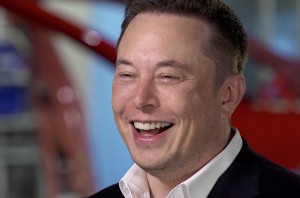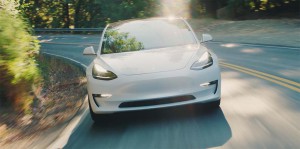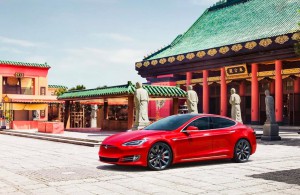
Tesla's Elon Musk said the company faced significant headwinds in the previous quarter and will continue to do so.
Tesla delivered its second consecutive quarterly profit on Wednesday, but hit by various headwinds, including weak sales in China, the world’s largest battery-car market, the numbers fell well below the Wall Street consensus forecast, triggering a pushback from nervous investors.
The automaker said it would push to boost production of its mainstream Model 3 battery-electric vehicle in the months ahead, but whether that can kick-start momentum remains uncertain, Tesla CEO Elon Musk earlier this week warning that the automaker faces a “very difficult” road ahead, something potentially complicated by a nearly $1 billion bond payment due near the end of the first quarter.
Referring to 2018 as “the most pivotal year in Tesla’s history,” the automaker tried to put a positive spin on its Q1 results, noting that sales came in stronger than expected with strong revenues. But the initial response was far from upbeat, despite Tesla shares regaining some of the losses of recent weeks during the regular Wednesday trading session.
The California-based carmaker reported earnings of $1.93 per share, off from the $2.20 consensus forecast compiled by Refinitiv. On the positive side, it beat the $7.08 billion revenue forecast, with the final figure coming in at $7.23 billion.
(Tesla strongly hints at Q1 loss, facing strong headwinds ahead. Click Here for the story.)
Revenues are expected to continue rising in 2019, now that the automaker has resolved what CEO Musk called the “production hell” at its Gigafactory battery plant in Reno, Nevada, and its Fremont, California assembly plant. It is shooting to deliver somewhere north of 360,000, and possibly as many as 400,000 vehicles for the full year, which would mean as much as a 65% jump over 2018 numbers.
“(We) continue to produce Model 3 vehicles at maximum production rates throughout 2019,” Tesla said in its earnings statement. It also addressed one of the problems it ran into even as the production gremlins finally were worked out in mid-2018, issues with getting those cars to customers. “Delivery and logistics systems continued to progress,” it said, but acknowledged there is still “room for more improvement.”
The automaker’s challenges remain significant. It is struggling to get its market growing in China ahead of the opening of a new assembly plant in Shanghai. That could happen as early as later this year.
Meanwhile, the trade battle between China and the U.S. has cut into earnings by raising the cost of Chinese-made parts and components.
(Click Here for more on Tesla’s plan to cut jobs.)
Tesla also has seen a decline in revenues from the regulatory credits it has counted on since launching its first product, the Roadster, earlier in the decade. Those credits are used by mainstream manufacturers looking to offset their own emissions problems.
The new year began on a tough note, however, as Tesla buyers have now seen their federal tax credits cut in half, to $3,750. They will be halved again on July 1, and then vanish entirely next January. That complicates matters just as a number of competitors are getting ready to roll out their own battery-electric vehicles. Porsche, Audi, Volkswagen and others will have all-new entries coming in 2019, while Nissan has launched the first version of its Leaf battery-electric vehicle with more than 200 miles range.
To help offset the impact of the tax credit phase-out, Tesla ordered a $2,000 per vehicle price cut this month, but that will crimp revenues.
The automaker also announced a 7% reduction in its workforce, a move that could help improve efficiencies. It’s not clear if that will do enough to let it launch the long-promised, $35,000 version of the Model 3 many potential buyers have been waiting for. Currently, the cheapest version starts at $44,000.
One of the concerns nagging investors is what will happen in March when Tesla has to make good on bond payments of $920 million. Unless its stock tops the strike price of $359.87 by then it will have to come up with the payment entirely in cash.
(To see more about claims EVs and gas-powered cars will cost the same in 2022, Click Here.)
While Tesla didn’t have to raise additional equity last year, as many had anticipated, the bond issue could push it to go back to the market in 2019. For its part, however, the carmaker said it has “sufficient cash on hand to comfortably settle in cash our convertible bond that will mature in March 2019.”



“…Tesla CEO Elon Musk…” I thought he wasn’t CEO of anything for the next 3 years. Did someone change their minds, or perhaps there has been an appeal?
Musk had to give his being CHAIRMAN for three years but was allowed to remain CEO.
Paul E.